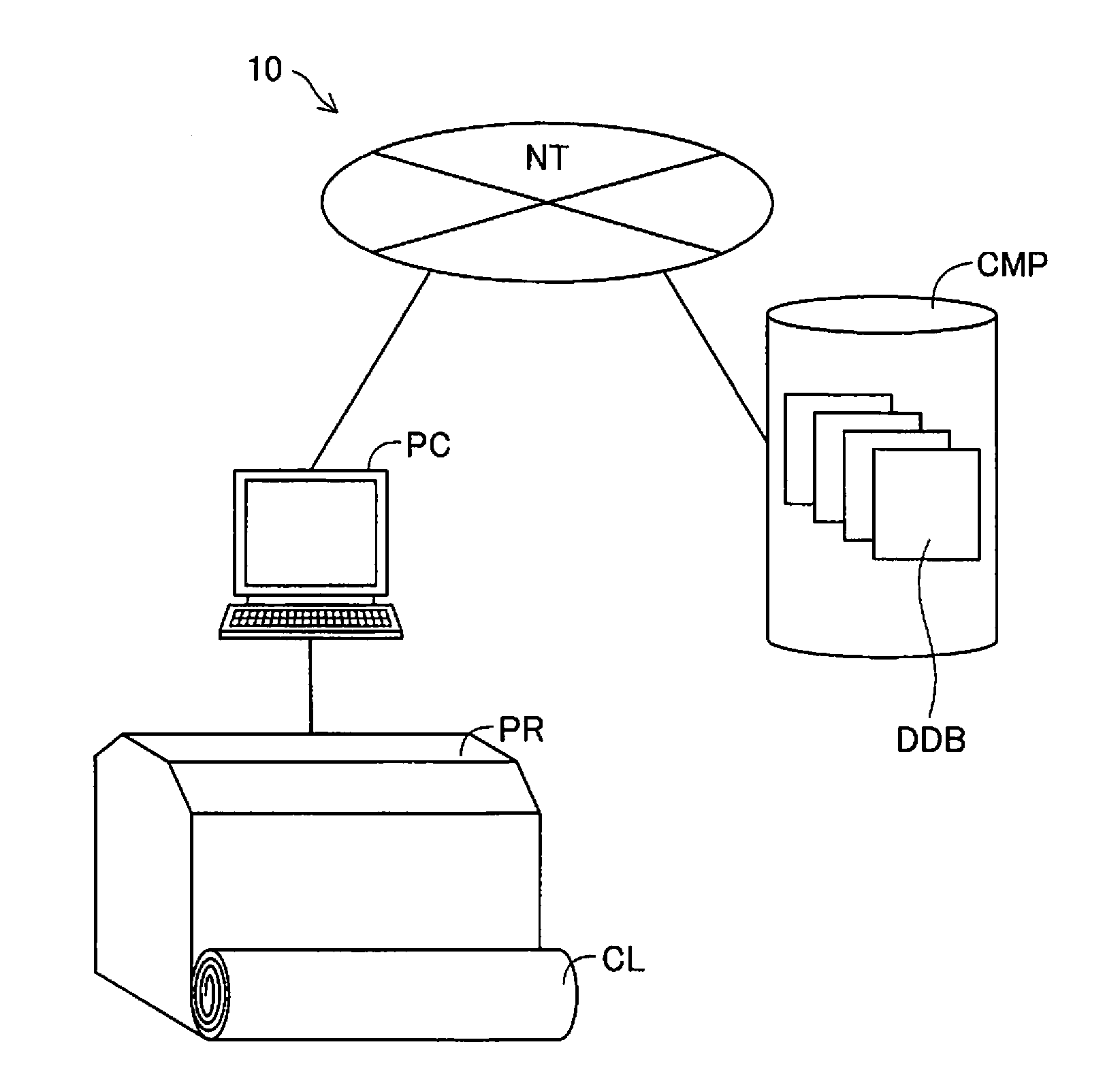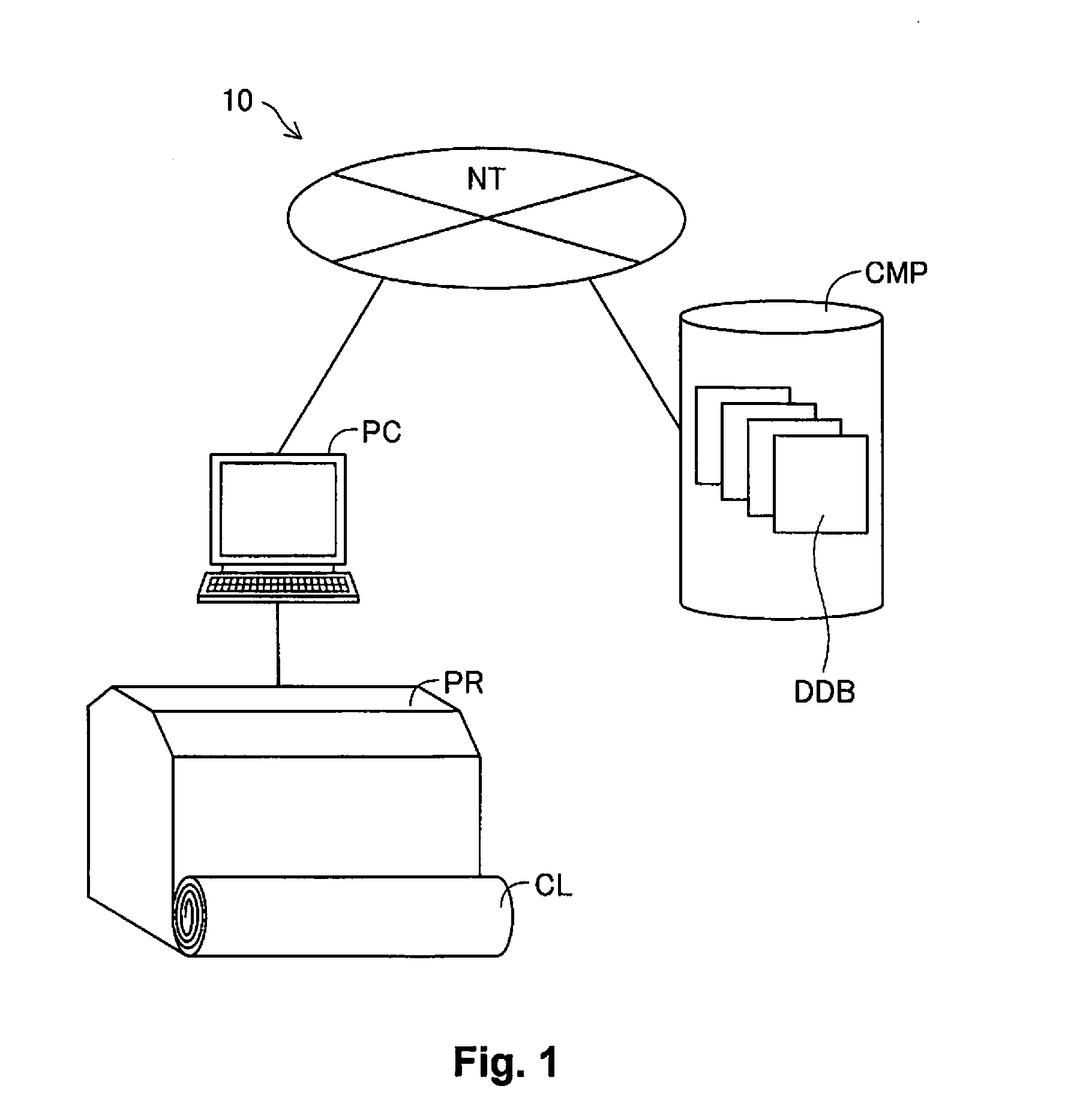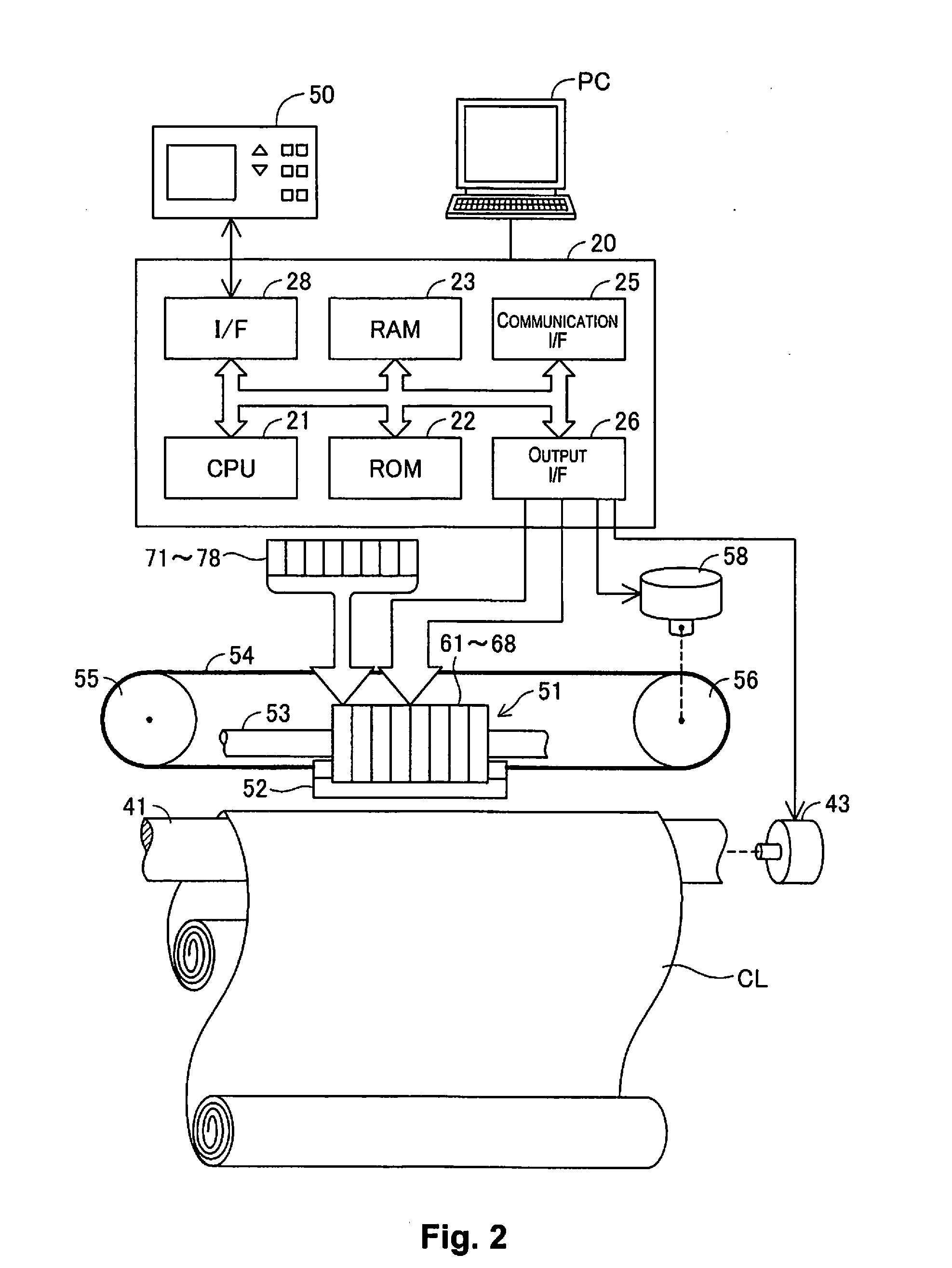Image data processing apparatus, print apparatus, and print system
- Summary
- Abstract
- Description
- Claims
- Application Information
AI Technical Summary
Benefits of technology
Problems solved by technology
Method used
Image
Examples
Example
Modification Example 1
[0075]In the embodiment above, the small, medium, and large dots all had the same ratios of volume of the ink droplets for each of the different models. In a case where the original data generation model and the target model have different ratios in the volumes of ink droplets for the small, medium, and large dots, then the gradation values Vold and Vnew illustrated in FIG. 8 should be set for each of the small, medium, and large dots. Also, in the description above, the ratios between the gradation values Vold and Vnew were found by the volumes of the ink droplets, but the ratios between Vold and Vnew may also be set by actually forming dots and measuring the densities thereof.
Example
Modification Example 2
[0076]In the embodiment above, the gradation values Vold and Vnew were set as the ratios of volumes of ink droplets between the different models. Alternatively, the gradation values Vold and Vnew may be determined by the following technique. The decision to increase or decrease the dots with an increase-decrease rate DP (0
Vnew=Vold / (1+DP) (4)
[0077]Herein, where the gradation value Vnew in the dot data actually used for the textile print machine is 255, then
255=Vold / (1−0.2)
Vold=204
[0078]This is equivalent to a case such as where the original data generation model is the model SP and the target model is the model ML, inversely to the example described in the embodiment above. In other ...
Example
Modification Example 3
[0079]In the embodiment above, the error was found by the formula (3), i.e., as
ΔD=dataX−Vnew (3)
[0080]at pixels where data conversion found that dots were to be formed. As such, with a case where the dots are being increased, the error ΔD would ordinarily take a negative value at pixels where it is determined that new dots are to be formed, and the formation of dots in the surrounding pixels is suppressed. In a case where the error ΔD at a pixel where a new dot is to be formed is not negative as a result of running the calculation in formula (3), then error would be said to still remain even though the dot is formed, and therefore an error that is too much to eliminate would carry on accumulating. More specifically, in a case where the halftoning at the original print machine results in there being a region in which the proportion of dot-ON pixels exceeds Vnew / Vold, then such a situation would occur because the ON dots would still be insufficient even though a...
PUM
 Login to View More
Login to View More Abstract
Description
Claims
Application Information
 Login to View More
Login to View More - R&D
- Intellectual Property
- Life Sciences
- Materials
- Tech Scout
- Unparalleled Data Quality
- Higher Quality Content
- 60% Fewer Hallucinations
Browse by: Latest US Patents, China's latest patents, Technical Efficacy Thesaurus, Application Domain, Technology Topic, Popular Technical Reports.
© 2025 PatSnap. All rights reserved.Legal|Privacy policy|Modern Slavery Act Transparency Statement|Sitemap|About US| Contact US: help@patsnap.com



